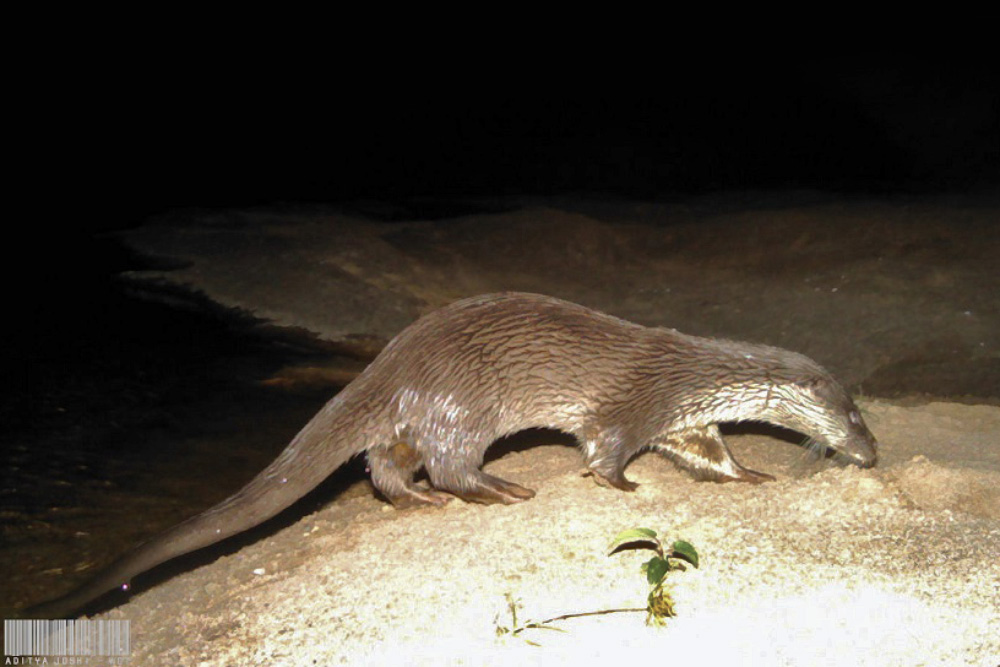The Eurasian Otter (Lutra lutra) is a Near Threatened otter species. While there is much research globally, little is known of its distribution in India, making a recent record from Chilika lake in Odisha significant.
We, at The Fishing Cat Project, stumbled upon this otter while searching for another wetland carnivore in Chilika – the Fishing Cat. Locals told us about the presence of ‘Uddho’ or otters in Chilika, but even they were not aware of the fact that two separate species of otters occurred in their region.
Being no experts on otters, we thought that these were Smooth-Coated Otters and had released a short film on our work in Chilika called Hidden Glories of Chilika, which we had shared with the IUCN Otter Specialist Group. Nisarg Prakash, a member of the group, promptly informed us that we had recorded both the Smooth-coated and the Eurasian Otter in Chilika and that the record of the Eurasian Otter was particularly significant. Subsequently, the identification was individually confirmed by two other experts – Will Duckworth (IUCN Small Carnivore Specialist Group) and Dr. Syed Ainul Hussain (Wildlife Institute of India).
According to SH Prater (The Book of Indian Animals, 1948), the species was found in Kashmir, the Himalayas and in Assam but never in Peninsular India. The same pattern is portrayed in the IUCN distribution map. This raises the question: if there are no connecting populations in between, how could the Eurasian Otter be found in South India?
It is here that our findings are thrilling! Not only is this the first record of this otter from Chilika but probably the first record of its population from the eastern coast of India. This provides renewed thrust for detecting otters along the eastern coast – the joining dots between northern and southern Eurasian Otter populations of India.
Prior to this study, Eurasian Otters have been recently captured on camera traps in both the Satpura and Kanha landscapes (in central India) giving further impetus to our understanding of the distribution and habitats of the Eurasian otter. Recent records indicate that they are found in a large swathe, ranging from the Satpuras in the west to Chilika on the eastern coast forming the missing link between the Eurasian otters in the Himalayas and in South India.
Smooth-coated Otters have distinct characteristics – short muzzle, elongated tail and less vibrissae. On the other hand, Eurasian Otter have an elongated muzzle, rounded tail and long and thick vibrissae (whiskers).
We hope that the presence of three wetland carnivores – Fishing Cat, Smooth-coated Otter and Eurasian Otter will bring the marshlands in Chilika under the radar of conservation and research priority. Chilika is a UNESCO World Heritage Centre and a Ramsar site.
With inputs from Nisarg Prakash.


 CI is a non-profit, non-commercial portal that aims to facilitate wildlife and nature conservation by providing reliable information and the tools needed to campaign effectively.
CI is a non-profit, non-commercial portal that aims to facilitate wildlife and nature conservation by providing reliable information and the tools needed to campaign effectively.


